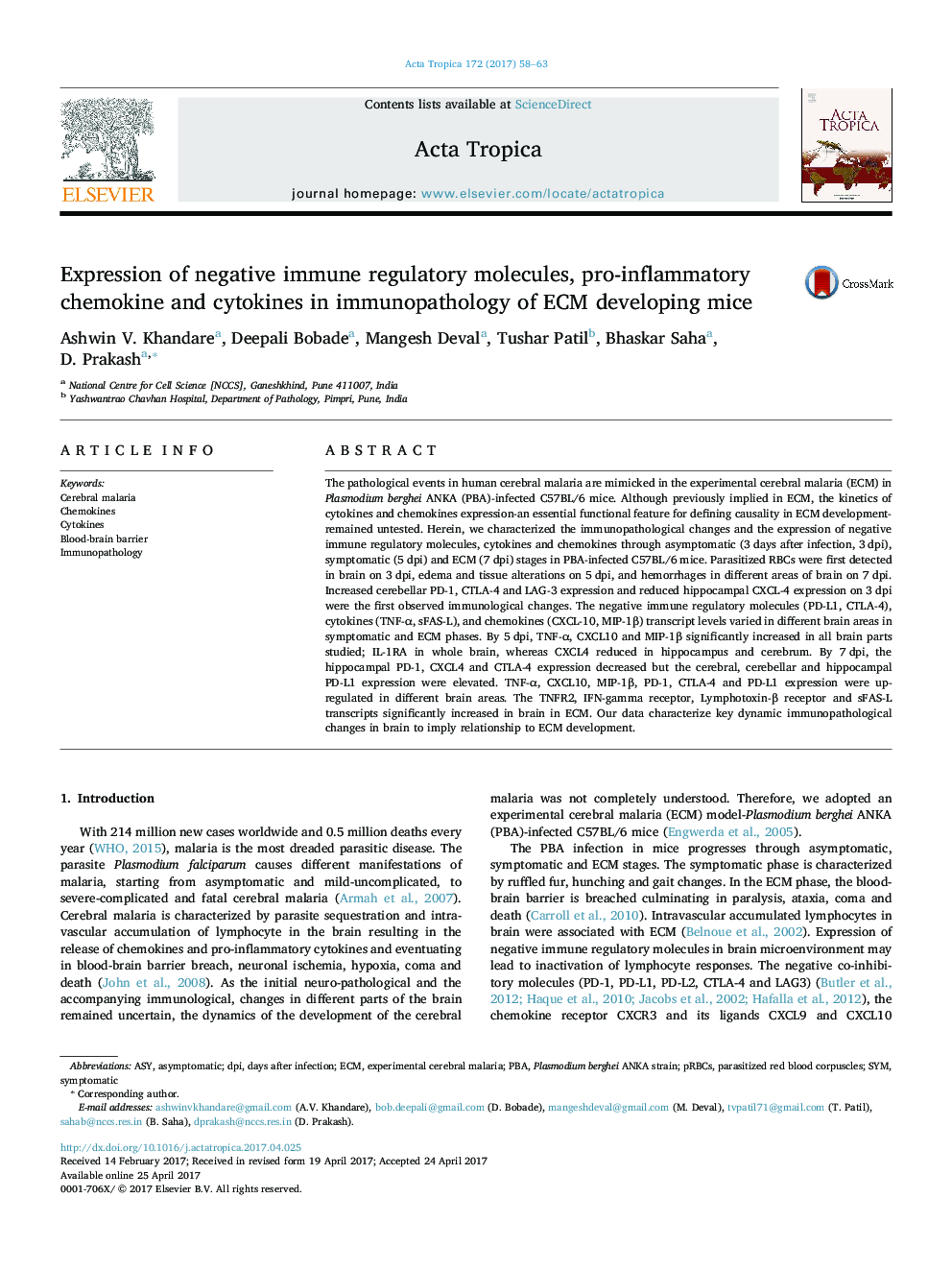| Article ID | Journal | Published Year | Pages | File Type |
|---|---|---|---|---|
| 5671140 | Acta Tropica | 2017 | 6 Pages |
â¢P. berghei ANKA infection progresses via asymptomatic, symptomatic and ECM phases.â¢Rising brain PD1, CTLA4, LAG3 and CXCL4 expression precedes the symptomatic phase.â¢TNFα, CXCL10, MIP1β rise before the ECM, when PD-L1 and CTLA4 expression increase.â¢We characterize phase-specific immunopathology in P. berghei ANKA infection.
The pathological events in human cerebral malaria are mimicked in the experimental cerebral malaria (ECM) in Plasmodium berghei ANKA (PBA)-infected C57BL/6 mice. Although previously implied in ECM, the kinetics of cytokines and chemokines expression-an essential functional feature for defining causality in ECM development-remained untested. Herein, we characterized the immunopathological changes and the expression of negative immune regulatory molecules, cytokines and chemokines through asymptomatic (3 days after infection, 3 dpi), symptomatic (5 dpi) and ECM (7 dpi) stages in PBA-infected C57BL/6 mice. Parasitized RBCs were first detected in brain on 3 dpi, edema and tissue alterations on 5 dpi, and hemorrhages in different areas of brain on 7 dpi. Increased cerebellar PD-1, CTLA-4 and LAG-3 expression and reduced hippocampal CXCL-4 expression on 3 dpi were the first observed immunological changes. The negative immune regulatory molecules (PD-L1, CTLA-4), cytokines (TNF-α, sFAS-L), and chemokines (CXCL-10, MIP-1β) transcript levels varied in different brain areas in symptomatic and ECM phases. By 5 dpi, TNF-α, CXCL10 and MIP-1β significantly increased in all brain parts studied; IL-1RA in whole brain, whereas CXCL4 reduced in hippocampus and cerebrum. By 7 dpi, the hippocampal PD-1, CXCL4 and CTLA-4 expression decreased but the cerebral, cerebellar and hippocampal PD-L1 expression were elevated. TNF-α, CXCL10, MIP-1β, PD-1, CTLA-4 and PD-L1 expression were up-regulated in different brain areas. The TNFR2, IFN-gamma receptor, Lymphotoxin-β receptor and sFAS-L transcripts significantly increased in brain in ECM. Our data characterize key dynamic immunopathological changes in brain to imply relationship to ECM development.
Graphical abstractDownload high-res image (304KB)Download full-size image
